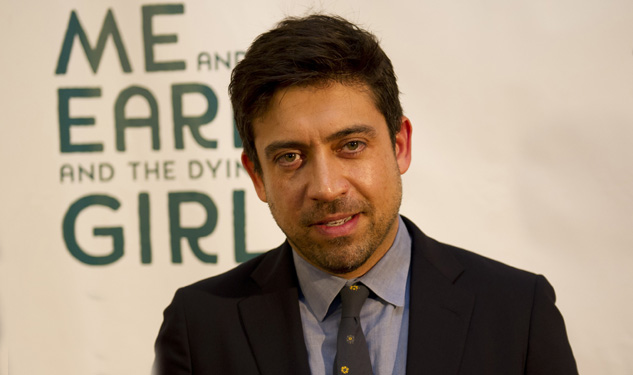
- Industry
Alfonso Gómez Rejón: From Laredo to Hollywood
The Mexican American director of Me and Earl and the Dying Girl studied under Scorsese, Nora Ephron, Alejandro González Iñarritu and Ryan Murphy before helming his uniquely personal story.
While his name is yet to be widely known, Alfonso Gómez Rejón, director of Me and Earl and the Dying Girl, a visual adaption of the novel written by Jesse Andrews is most definitely on the cusp. Dying Girl bowed earlier this year at the Sundance Festival taking home both the Audience Award and the Grand Jury Prize. That, in turn, sparked a bidding war which resulted in the all-time record sale in Park City when Fox Searchlight beat out the competition for rights to the film. As word of the film – and the deal – spread like wildfire in Hollywood, Gómez Rejón found himself the hottest up and coming director in a matter of days. The critical success of the movie only added to his reputation and now the 35 year-old director is being mentioned as a candidate to direct Collateral Beauty starring Hugh Jackman and Rooney Mara.
Son of a respected Mexican psychiatrist who moved the family across the border to Laredo, Texas, Gómez Rejón lived in a home overflowing with culture: “There was always singing, music, and they always took us to the theater in San Antonio. We visited museums all the time. My dad was friends with (famed Mexican musician and composer) Armando Manzanero, because his brother who was from Yucatán was also a composer”. The director spoke to us in Los Angeles in clear and perfect Spanish, recounting the artistic streak in the family. “My brother began as a musician. He played drums, my sister painted and I ended up making films”. After moving to New York to attend the celebrated Tisch School of the Arts at NYU, Alfonso got a job working as an intern in the offices of his lifelong idol Martin Scorsese and he worked as a production assistant on the set of Casino. As the years passed he was an assistant to Nora Ephron during the making of You’ve Got Mail, he worked with Alejandro González Iñarritu on 21 Grams and later became second unit director for Babel. He did the exact same job in Eat, Pray, Love and as a result he developed a strong relationship with Ryan Murphy, who invited him to direct eight episodes of Glee and gave him the opportunity to make his debut as a filmmaker in the horror movie The Town That Dreaded Sundown.
When American Horror Story received a Golden Globe nomination for Best Miniseries in 2014, Gómez Rejón already occupied an important position behind the camera. By the time Indian Brush went out looking for a director for the promising Me and Earl and the Dying Girl, the Mexican American film maker had enough prestige to get the job, and he felt uniquely qualified to tell the story of teenagers suddenly confronted with mortality. “I loved the characters and the dialogues” Réjon said, “and my father had just recently passed away. He was really my best friend and I was really having a hard time coming to terms with the fact he was no longer there. In the script a character, Mr. McCarthy, tells (the protagonist) Greg that when people die they linger on, just in different form, you just have to listen for them. It wasn’t anything particularly religious but the concept moved me deeply. Especially because Greg deals with the emotions by making a movie! I knew then I had to make the film for myself and for my father”.
In the film Greg (Thomas Mann) is a high school senior who drops all his plans including getting into college to be with a fellow student Rachel (Olivia Cooke) who has been diagnosed with leukemia. The director, whose looks are often compared to those of Javier Bardem, admits he had his reasons for convincing the producers that he was the one to make this film. “I didn’t want anyone else to direct it”, says Gómez Rejón. “I felt I was the only person to tell the story and it’s one of those things that you can be totally wrong about, and I am sure there are more talented directors that would have made a better movie, but I was convinced that I was the only one who could tell it”.
Gabriel Lerman

